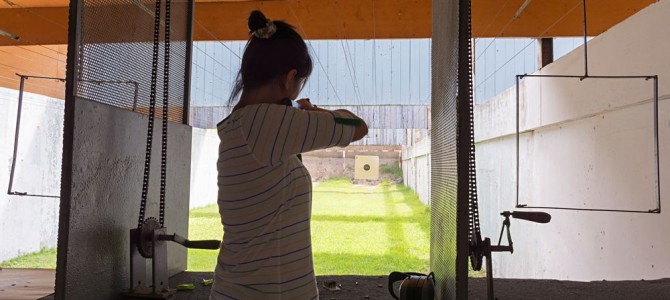
Nobody—not even the editorial board of The New York Times—is free from the moral responsibility to do a little research before commenting on a matter of public import. If you are going to talk about a contentious public issue, you should learn a little bit about it beforehand to avoid misleading others and making yourself look profoundly foolish.
Unfortunately the Times’s editorial board recently ignored this timeless advice and issued an editorial that was essentially a grand exercise in willful ignorance. According to the Times, Missouri’s recent passage of a “constitutional carry” gun law has transformed the Show-Me State into “the shoot-me state.” The Times says the law represents “a wholesale retreat from gun safety in the state.”
This is reckless enough to almost constitute journalistic manslaughter, for reasons that are obvious to anyone with an Internet connection and the ability to use a search engine. Before we get to that, just reflect: is there any policy topic in the United States that causes more people to get more things wrong than guns? Is there a public debate in which the ratio of commentary to knowledge is more lopsided? It is always astonishing not merely how little people know about guns, but also how determined they are to learn almost nothing about them.
Times Asserts But Feels No Need to Prove
So it goes with the Times, which believes that a liberalized gun-carry regime will result in mass bloodshed in Missouri. The most controversial aspect of the law is that it allows Missouri citizens to carry concealed weapons without a permit, something the Times thinks is a very bad idea. Naturally the question arises: is there an increased risk from constitutional carry laws? Are there compelling data from other states to suggest as much? Where is the evidence?
The Times provides none at all. The paper claims the law is “an invitation for people to be armed without responsible controls.” It cites exactly zero proof suggesting the law will have a negative effect. This is understandable, because no such proof exists. In fact, there is evidence to suggest just the opposite.
How might we determine this? By doing what the Times refused to do: we can look at the data from other states with constitutional carry laws on the books. For instance, Vermont has had a constitutional carry regime since roughly the beginning of the United States. In 2014, according to the FBI, Vermont had only six gun murders total. It tied for the second-lowest confirmed gun murder rate in the country. Only half of those were with handguns (which is understandably the weapon of choice for concealed carry).
Vermont’s constitutional carry arrangement has lasted well over 200 years. Where is all the violence and bloodshed? Did the state’s violent criminals not get the memo?
Or what about Wyoming? The state passed a constitutional carry law in 2011. Did the state suddenly experience an explosion of gun-related violence? Well, no. In fact, the numbers dropped, from 11 gun murders in 2011 to five in 2012. It jumped to nine in 2013 and then dropped again to eight in 2014. That’s an overall reduction in gun deaths since the law was passed. Did Wyoming’s move represent a “retreat” from “gun safety?” You can hardly tell if so.
What about Arizona? Gov. Jan Brewer signed a constitutional carry law there in 2010. What happened next? Gun murders plummeted over the next four years: from 232 in 2010 to 222 in 2011 to 211 in 2012 to 184 in 2013 to 153 in 2014. Gee, some “shoot-me state!”
The New York Times Is Irrationally Afraid of Guns
Other recent state-level constitutional carry laws—in Idaho, Maine, Kansas, and elsewhere—have only been enacted in the past year or so. As a result, it is too early to tell if these states experienced drops in gun homicide rates similar to Wyoming and Arizona. What we do have literal centuries of data to suggest is that passing constitutional carry laws do not automatically spike gun violence, and indeed in states where constitutional carry is passed, gun violence may drop at the same time.
Why did the Times refuse to consider such data? Why did it neglect to examine the effect similar laws have had in other states? You might chalk it up to partisan bias. But there is something else at work here: hoplophobia, or an irrational fear of firearms. Like a great many people, the editorial board isn’t interested in learning about guns. They are interested in being afraid of guns and transmitting that fear to other people.
Sadly, this is the level to which much of our gun debate has sunk: fact-based and well-reasoned argument on one side, and illiterate, willfully ignorant, and dishonest rhetoric on the other.
These kinds of reactions are helpful in one way, however: they remind gun rights activists to stay vigilant in defense of our precious Second Amendment rights, for they are always under threat.









